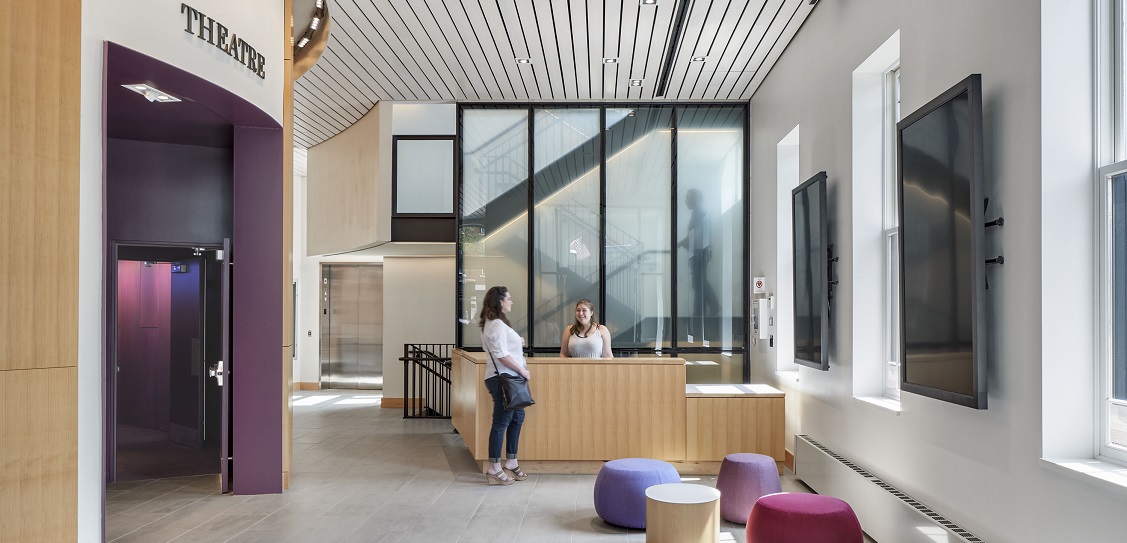The new performing arts building in the Lowell National Historical Park in Massachusetts contains an “egg theatre” within the shell of an historic train depot.
The Richard and Nancy Donahue Family Academic Arts Center reimagines the dormant 1876 Boston & Maine Railroad Depot at Towers Corner in Lowell, Massachusetts, as a new performing arts venue.
In need of a new performing arts center for its urban campus, Middlesex Community College identified the building’s potential and purchased it for development.
Leers Weinzapfel’s innovative design restores the depot’s deteriorating exterior masonry and incorporates a redesigned interior that contains three major teaching spaces—a 100-seat music recital hall, dance studio, and a two-storey, 177-seat “egg” theatre.
Comprised of a continuous ring of heavily-reinforced, 10-inch concrete masonry with spanning beams that support the facade, the theatre’s form comprises the building’s structural core, supporting new spaces and bringing the historic structure into modern code compliance.
Its outside curve, clad in maple veneer panels, allows for circulation from the building’s ground floor public lobby front to its academic back.
Stepping down from the ground floor to a basement level, the theatre affords excellent sight lines and fully accessible space.
Viewed through the Center’s generous sash windows, the egg form delivers a sense of drama illuminated by programmable LED lighting, the colour of which can be changed to reflect the mood of the evening’s performance.
On the second floor, the recital hall and dance studio take advantage of the Center’s high roof. Along the sidewalk, a linear gallery and theatre lobby display student activity and invite the public in through a main entry at the base of the building’s landmark clock tower.
Exterior expansion of the depot to accommodate the Center’s growing departments was constrained by an existing historic district building that fills the site. Instead, the building’s interior space was nearly doubled through excavation and construction of a new basement and a new rear addition housing the mechanical support spaces.
The project’s approach to sustainability is primarily defined by the extensive renovation of an unused historic building in a pedestrian friendly urban center near public transportation. Additionally, existing building materials were reused, and new building materials were recycled or rapidly renewable.
The Center also incorporates a high-performance building envelope, water-saving technologies, and high-efficiency equipment and automated controls that reduce energy use and improve the indoor environment.
The World Architecture News Awards showcase the best international design in both current and future projects. Entries for the 2019 Awards are now open - for further information and to submit your entry please click here.
To see the full list of winners from the 2018 WAN Awards, click here


